The Spider Web Spinning Project seeks to digitally replicate the intricate process of spider web construction. By delving deep into the anatomy, behavior, and environmental conditions influencing web formation, this project aims to unravel the secrets behind nature’s engineering marvel.
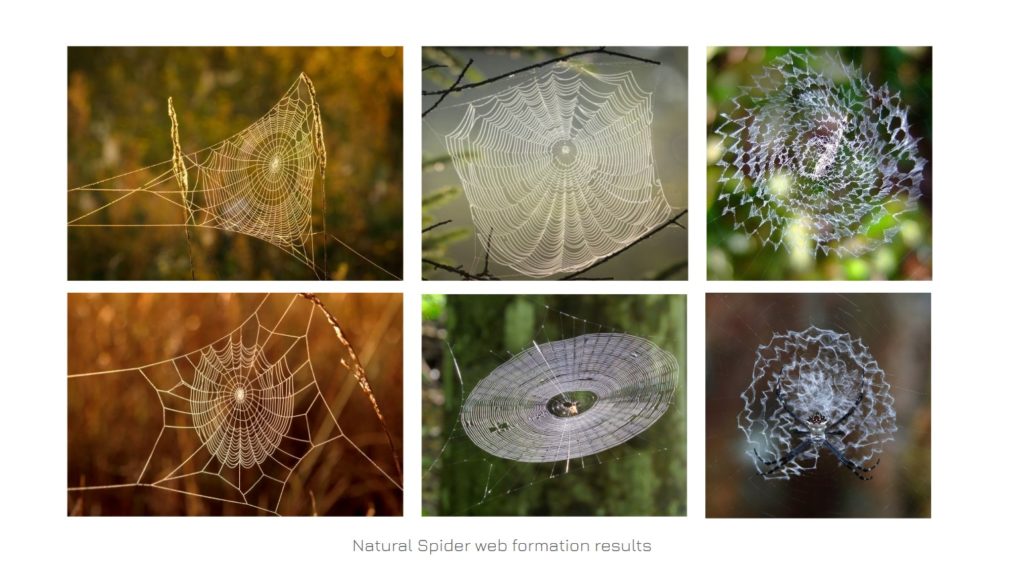
Spider web formation, known as “web spinning,” is a remarkable feat of engineering mastered by spiders. Using silk produced in their spinnerets, spiders meticulously weave intricate webs to capture prey and provide shelter. The process involves precise movements and specialized silk types tailored for various purposes, such as sticky capture silk or structural support silk. Each spider species has its unique web-building techniques, reflecting adaptations to their environment and hunting strategies. These webs not only serve as functional traps but also exhibit stunning geometric patterns, showcasing the beauty of nature’s design.
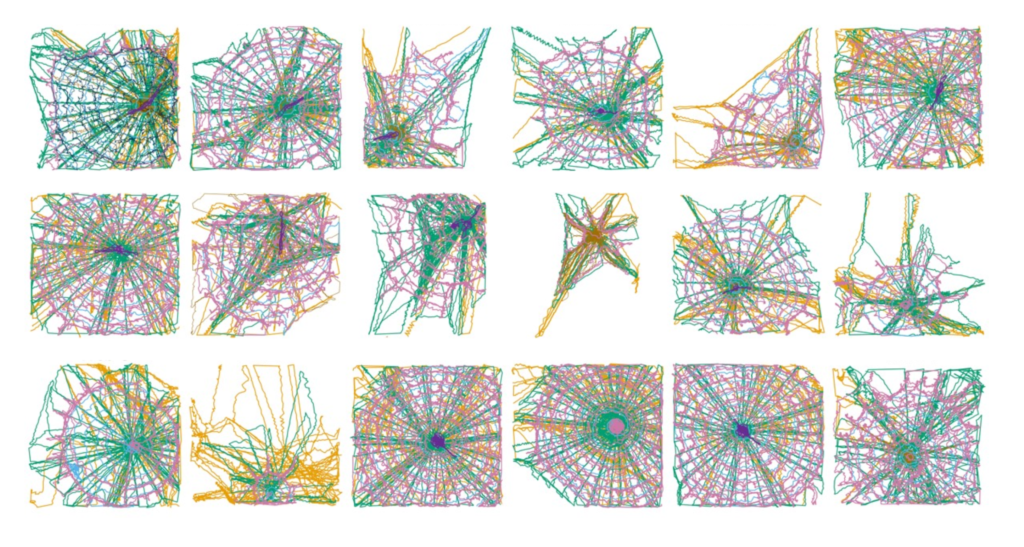
A recent study tracking spiders as they weave their webs reveals a detailed choreography behind the process. Researchers observed precise movements, unveiling the intricate sequence of actions spiders undertake during web construction. This provides valuable insights into the skill and coordination involved in this fundamental aspect of spider behavior.
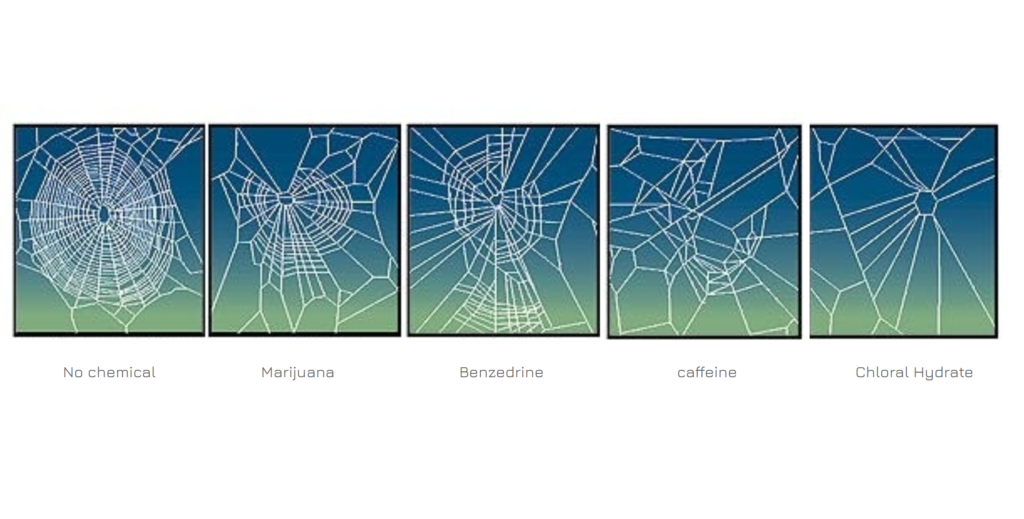
A study explored on spider web administered with the psychoactive effects of drugs on spider web construction, revealing intriguing behavioral changes. Researchers observed alterations in the structure and symmetry of webs when spiders were exposed to various substances. This research offers insight into the potential impact of psychoactive compounds on the intricate behaviors of spiders, providing a unique perspective on both drug effects and arachnid behavior.
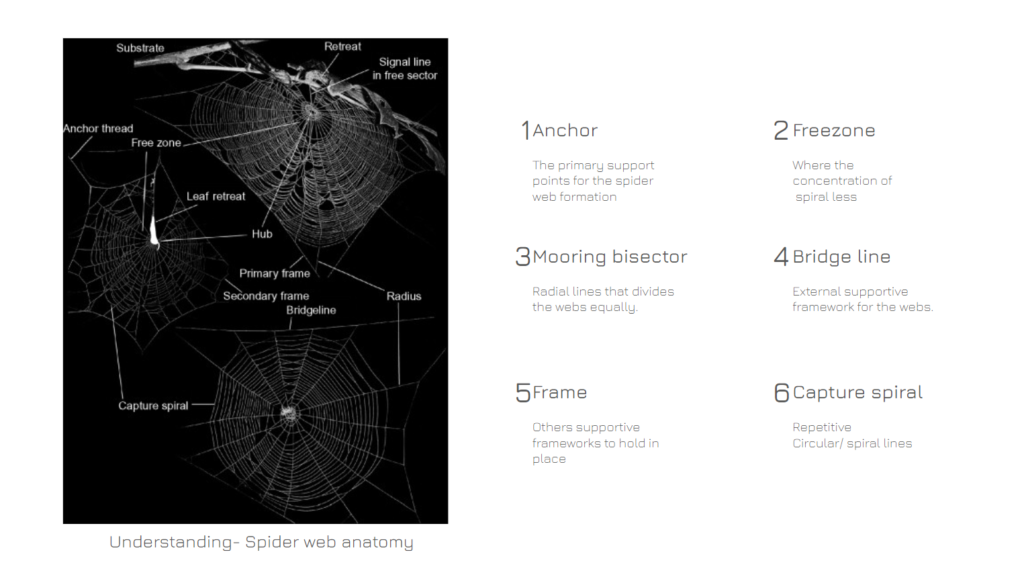
A spider web comprises multiple components: radial lines extend from a central point outward, providing the web’s framework. Spiral threads are meticulously woven around these radial lines, creating a sticky surface to ensnare prey. Additionally, some webs feature a distinctive zigzag pattern known as the stabilimentum, which strengthens the web’s structure and serve a role in attracting prey or deterring predators.
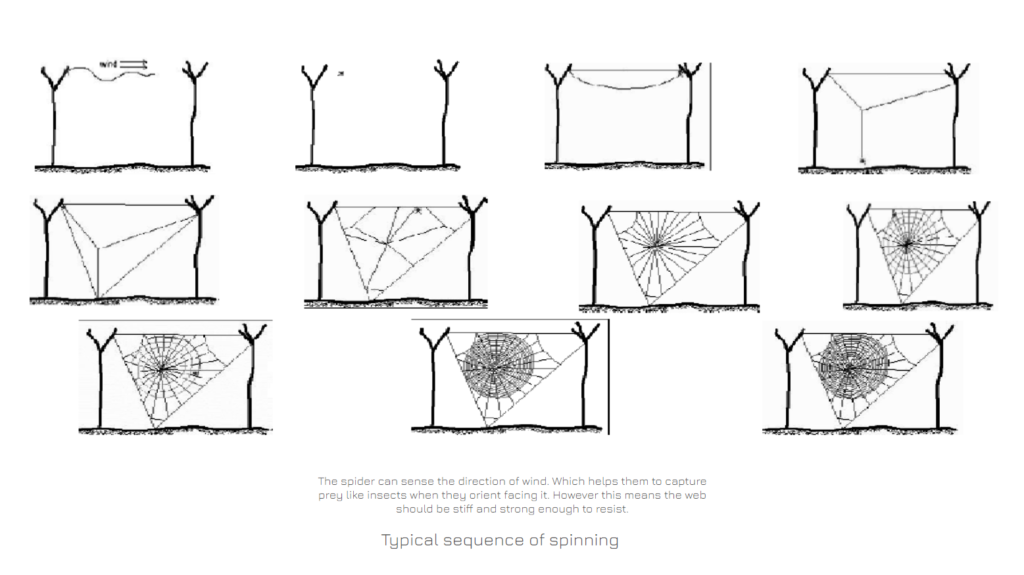
The study of spinning and applications of spider web features schematic illustrations detailing the intricate spinning process of spider silk, showcasing the step-by-step sequence from silk production in the spinnerets to web construction.
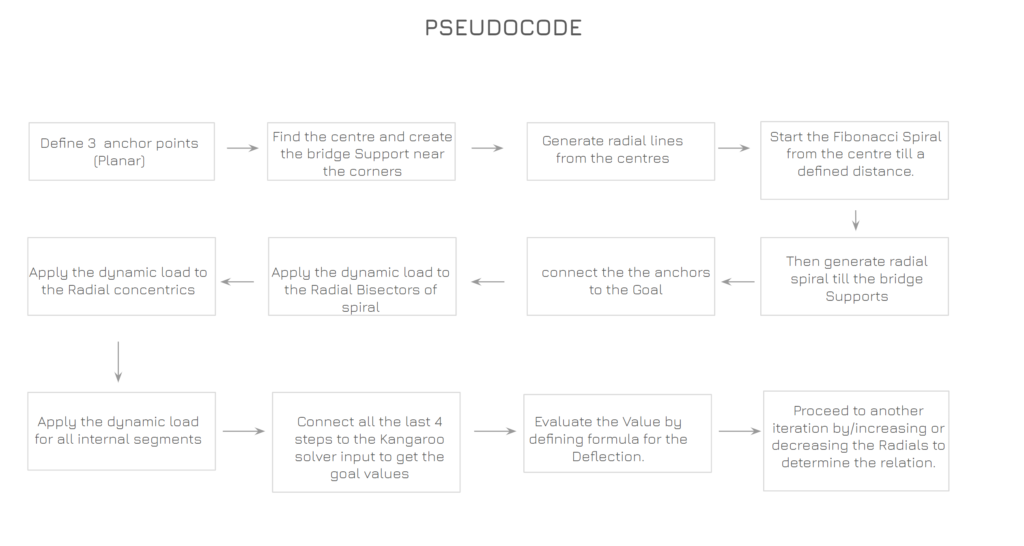
The project aims to develop a computational method for optimizing the structural design of bridges inspired by natural patterns like the Fibonacci Spiral. By utilizing pseudocode to outline the iterative process, the project systematically constructs bridge supports and radial lines, incorporating dynamic loads for realistic simulations. Through integration with the Kangaroo solver, the method enables evaluation and refinement of structural integrity.
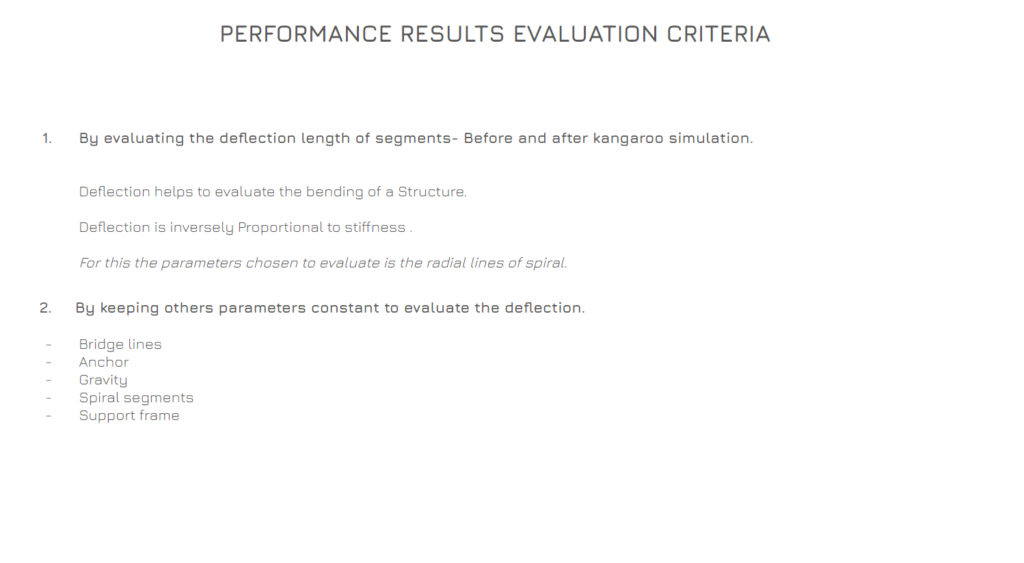
The process involved creating spider webs parametrically and simulating through kangaroo physics and analyzing the results through calculations.

The future steps of this project is to decode how spider webs makes blanket on trees or plants with its spinning behavior. 2.Architectural application of blankets. 3.To investigate further. To decode its psychological behavior parametrically.

